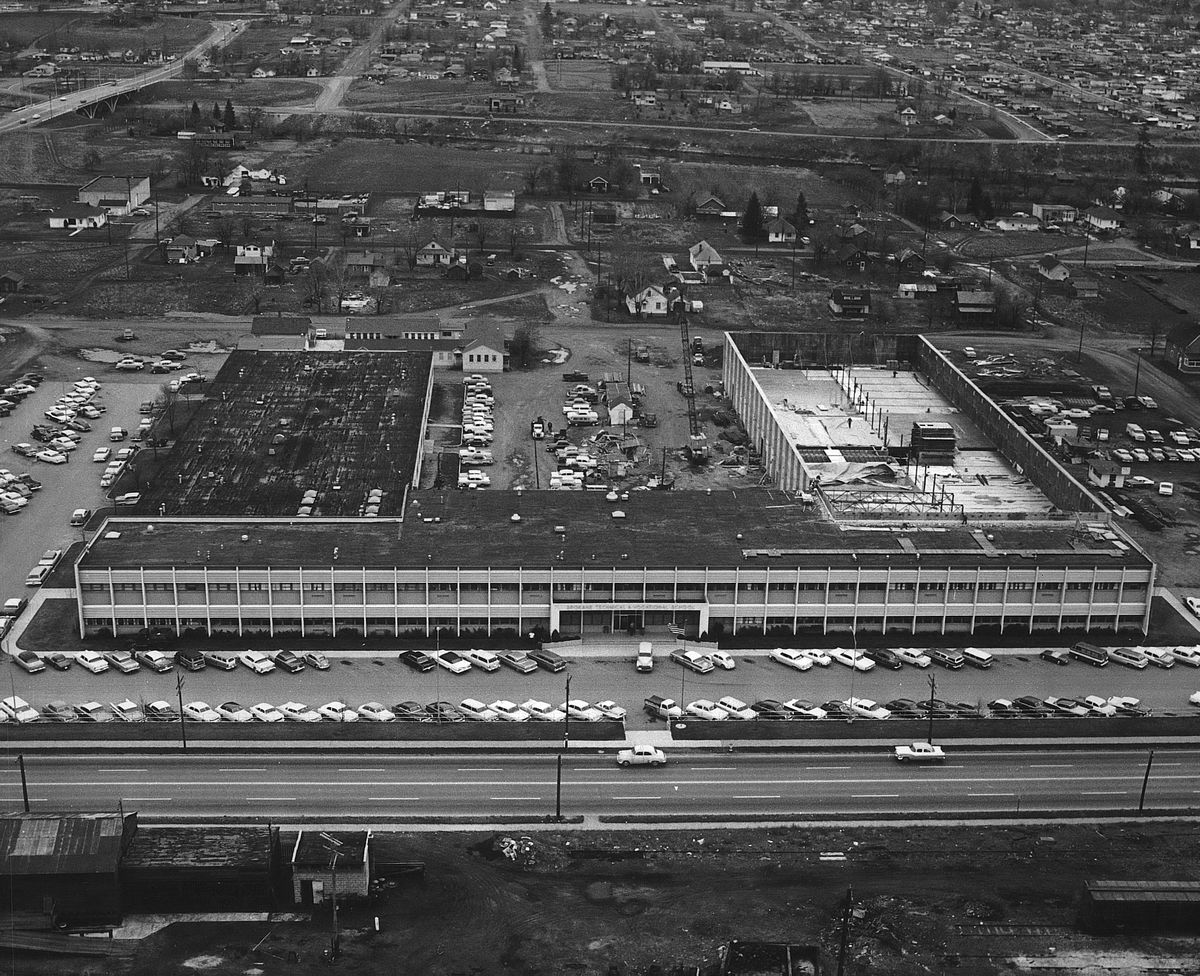Then and Now: Spokane Community College

Before World War II, if you weren’t going for a four-year college degree, a few private colleges and trade schools offered alternatives. Many private schools closed during the Great Depression.
Spokane’s community college system took root just before World War II.
Spokane Trade School was established in July 1940 with a $70,000 state grant. A former North Central shop teacher, Edward J. Griffin, was the principal. There were 1,500 students signed up by Thanksgiving of that year, including 300 servicemen who were taking classes related to their military specialties.
The Spokane school district would oversee the classes, which were held at the former Hawthorne Elementary and wherever space was available. The first classes were in carpentry, welding, machining, radio repair, plumbing and electrical work. Students, mostly men, attended six-hour days, five days a week.
The school added the Spokane Vocational School for Practical Nursing in 1947. The program was sponsored by Deaconess, St. Luke’s and Sacred Heart hospitals, which had each run residential nursing schools. Student nurses in the program would take Tuesday and Thursday night classes, then work in one of the hospitals.
For almost 20 years, with classes scattered at various locations, the renamed Spokane Technical and Vocational School opened a campus at 3403 E. Mission Ave. in 1958.
In 1963, the school was designated as a state junior college, which kicked off several years of construction on Mission Avenue and at the former Fort George Wright campus, which received eight separate buildings.
In 1970, the two campuses became separate colleges, managed by a state board. During budget cuts in the early 1980s, the two schools combined under the name Community Colleges of Spokane with a single chief executive with the title of “chancellor.”
In 1987, the executive director of the state community college system, John Terrey, criticized state legislators pushing for budget cuts, saying the schools are “the last opportunity for many people. They’re for single mothers, laid-off loggers, the poor, late bloomers, immigrants trying to get a start in this country.”
According to the Community Colleges of Spokane website, the two colleges served more than 26,000 students in the 2019-20 school year. Approximately 16,000 of those were seeking some type of degree or career technical certification while the rest were getting their GED, learning English, in job-related classes or studying for personal enrichment.